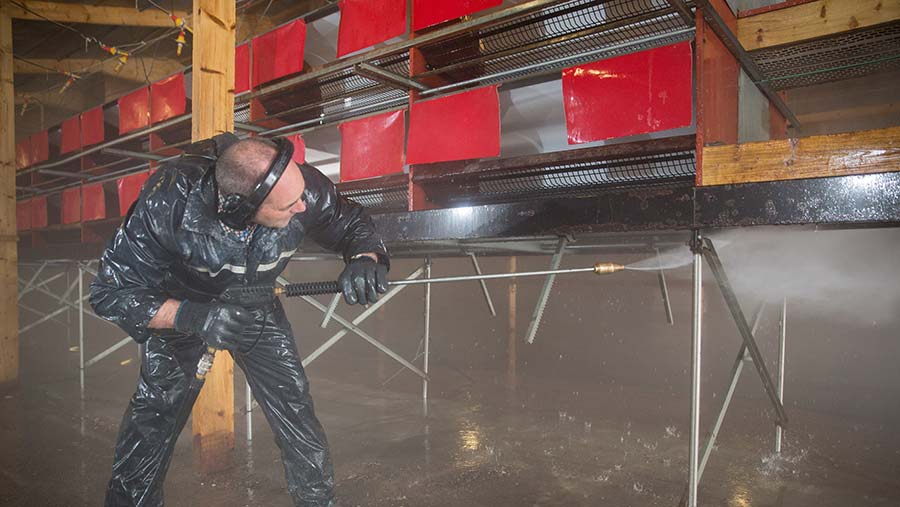Defra eases rules on restocking after avian flu outbreak
 © Tim Scrivener
© Tim Scrivener Restocking on poultry farms following an avian flu infection can now happen less than four months after just one cycle of secondary cleansing and disinfection (C&D).
Farms were previously ordered to wait 12 months after a flock was culled before they could repopulate, if they opted for secondary C&D to a standard set by the World Organisation for Animal Health.
See also: Avian influenza prevention tips and how to handle an outbreak
But, in a shift in policy, Defra says that can now take place within three months and 21 days of the premises being signed off by the Animal and Plant Health Agency (Apha).
The change is particularly welcomed by producers supplying the Christmas market, who previously would not have had sufficient time to restock.
Robert Gooch, chief executive of the British Free-Range Egg Producers’ Association, said restocking after three months and 21 days made “perfect sense’’.
“We have been lobbying for it for a while,’’ he said. “It will help seasonal producers as if they had an outbreak they would not be able to get birds ready for the following Christmas.’’
Producers still have the option to restock as quickly as 21 days if they carry out a full secondary C&D, which involves cleansing, degreasing and disinfecting their premises, and repeating the process a week later.
The initial costs that arise from an outbreak – culling, disposal and preliminary C&D – will still be paid for by the government. Affected farmers have to meet the full cost of secondary cleans.
If no secondary cleaning takes place, premises must remain under restriction for 12 months from the date of the government-funded clean.
This means the sheds, ranges and surrounding areas ca not be used for any purpose for a year.
Farms issued with licences by Apha to restock have to agree to a monitoring period where birds must be tested by an official veterinarian appointed by the keeper.
They must pay for this process, but the government picks up the bill for the laboratory costs.